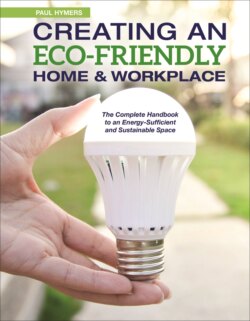Читать книгу Creating an Eco-Friendly Home & Workplace - Paul Hymers - Страница 24
На сайте Литреса книга снята с продажи.
Electroluminescent lighting
ОглавлениеIf you haven’t heard of this, then you soon will. It is a new form of cool burning, energy-efficient lighting. As an alternative to LEDs, electroluminescent lighting (EL) material is flat and can be used on a roll, cut and stuck with adhesive to go under kitchen units, for worktop lighting or as stair nosings. Anywhere, in fact, that a light fitting is required within a decorative layer or finishing. The material has the same thickness as tape. In 2017 it is more expensive than the LED strip light equivalent, but less bulky and will certainly come down in price when the market grows. A tiny capacitor is printed on a silkscreen with a phosphorous-based ink on its surface. When a small electrical field passes over the capacitor, it excites the ink’s electrons and illuminates them. These are sometimes referred to as light emitting capacitors (LECs).
LECs are wafer thin and flexible, and can be adhered to almost any surface, but to date you might be most familiar with them in the display of your mobile phone or car dashboard. For safety marker lights on stairs, they could be ideal, but most of the advances in this material seem to be in the glowing, colour splashed world of advertising, where it is being employed with great creativity. I suspect that LECs will become available for installation in our homes to enhance the safety and decor in a room, rather than illuminate it, but colour and design are what the lighting market is all about, and these EL’s are rapidly becoming fashionable.
Electroluminescent cell structure
